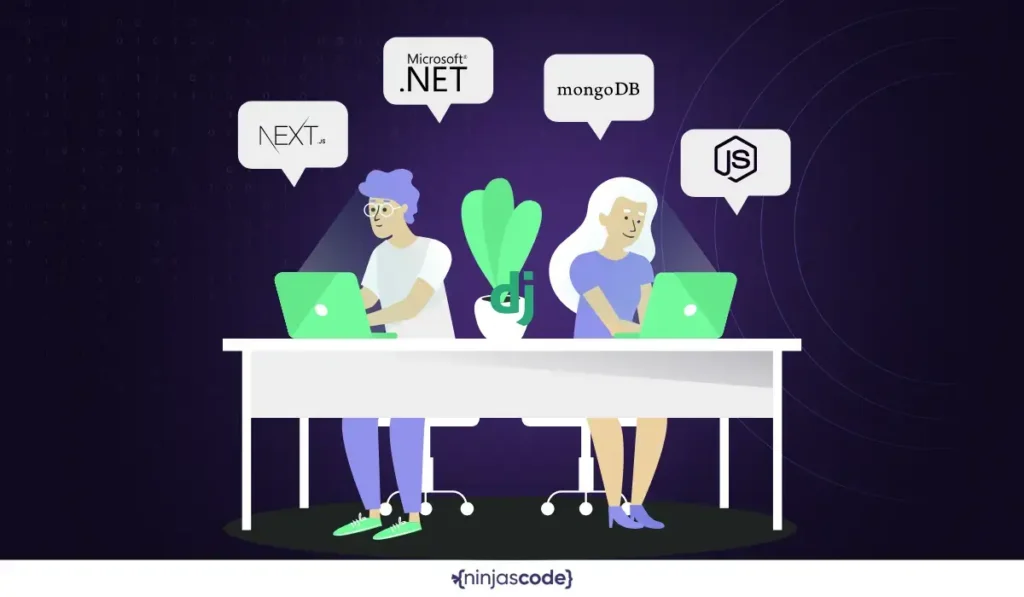
In the world of web development, the backend is like the backbone of an application. It’s the engine that makes everything work smoothly. It handles all the important functions and logic that make a web application successful. Without a backend framework, your website will not stand. So, knowing about the top ten backend frameworks is essential for a successful project.
Selecting the right backend framework is crucial and can enhance your development productivity and the overall performance of your web applications. It helps to build efficient, scalable, and robust web solutions that meet your customer’s needs.
However, which is the best backend framework that developers use? This is still a question in every developer’s mind. So, let’s explore the top ten backend frameworks with their pros, cons, and unique features.
What is a Backend Framework?
A backend framework is a software framework that provides the necessary tools, libraries, and components for developing the server side of web applications or software systems. It typically includes a collection of pre-written code and abstractions that facilitate common tasks involved in building web applications, such as:
- Handling HTTP requests
- Managing databases
- Implementing security measures
- Integrating with other services
Backend frameworks are designed to provide a structured environment for web development. They simplify the process and enable developers to build server-side applications efficiently.
What Is The Most Popular Backend Framework in 2024?
Several backend frameworks are available in the market. Choosing the right backend framework is critical for your web development projects.
So, check the list below and explore the top ten best backend frameworks.
1. ASP.NET Core
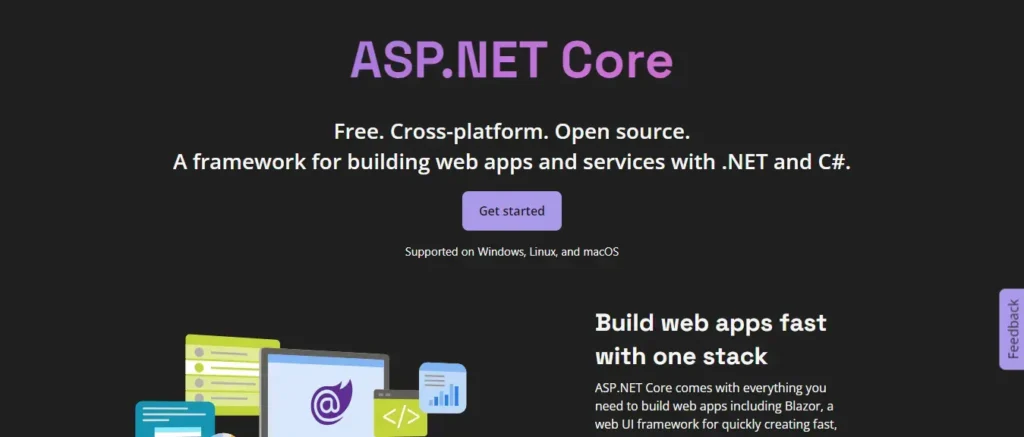
ASP.NET Core is developed by Microsoft. ASP.NET Core is a powerful open-source solution for creating strong and reliable web applications. It enables developers to build high-performing web applications that can run on various platforms such as Windows, macOS, and Linux. With a range of core features, it has become a leading web framework in the industry.
It is a highly regarded framework for developing real-time web applications. With its efficient real-time communication capabilities and extensive API support, it provides developers with a foundation for building dynamic and responsive web applications. Slack, Alibaba Travels, SpaceX, and MasterCard companies use ASP.NET as their backend framework.
ASP.NET Core Pros
- Require minimal coding.
- Good at handling lots of web traffic.
- Makes it easy for developers to add custom features to their applications. This is done through middleware components.
- A large community consists of experienced developers, enthusiasts, and experts who actively contribute to forums, online communities, and open-source projects.
- Help you design secure applications.
ASP.NET Core Cons
- Expensive as compared to other frameworks.
- Documentation of the framework is not good.
- If you make one change in a version, changes might not work in the next version of your app.
ASP.NET Core Unique Features
- Support for cross-platform
- Support for HTML5 form types
- Integrated MVC
- Asynchronous
2. Django

Django is a highly popular backend framework known for its comprehensive features that cater to a wide range of needs. As an open-source framework built on Python, it offers a strong foundation for developing database-driven websites.
One of the notable advantages of Django is its user-friendly nature, making it one of the easiest backend frameworks to work with. Additionally, Django provides seamless integration with various databases, including MySQL, PostgreSQL, SQLite, and Oracle. This flexibility allows developers to switch between different databases effortlessly, based on their project requirements.
Django Pros
- Quick and efficient
- Scalable
- Excellent documentation
- No code framework
Django Cons
- Not suitable for small projects
- Learning Django is not easy
- Monolithic nature
- Inability to handle multiple requests
Django Unique Features
- SEO optimized
- Large community support
- Secure authentication
- Rapid development
Launch Your SaaS Product with NinjasCode
3. Ruby on Rails
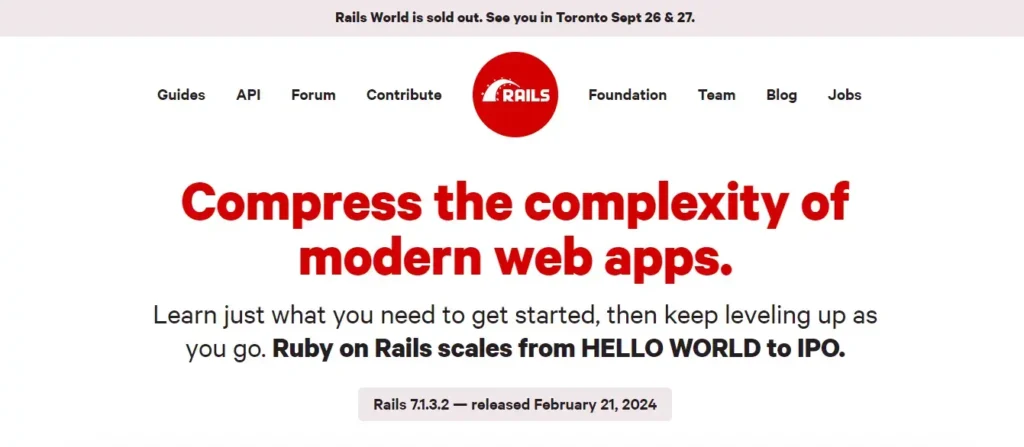
Ruby on Rails, often referred to as Rails, is a web application framework that follows the Model-View-Controller (MVC) architectural pattern. It is widely recognized for its ability to create database-driven web applications. Whether you’re designing a straightforward website or a sophisticated enterprise application, Ruby on Rails is an excellent choice.
Moreover, Ruby on Rails is ideal for freshers and easy to use. Due to its developer-friendly syntax, many next-gen companies like Shopify, GitHub, and Airbnb use this framework.
Ruby on Rails Pros
- Active and helpful community
- Save time and money
- Quicker web development
- Simple to maintain
- Enhanced security features
- Free to use
Ruby on Rails Cons
- Slower execution speed
- Scalability issues
- Lack of flexibility
- Not having enough documentation for developers
Ruby on Rails Unique Features
- Server-side scripting
- Automated deployment
- Completely object-oriented
4. Express.js
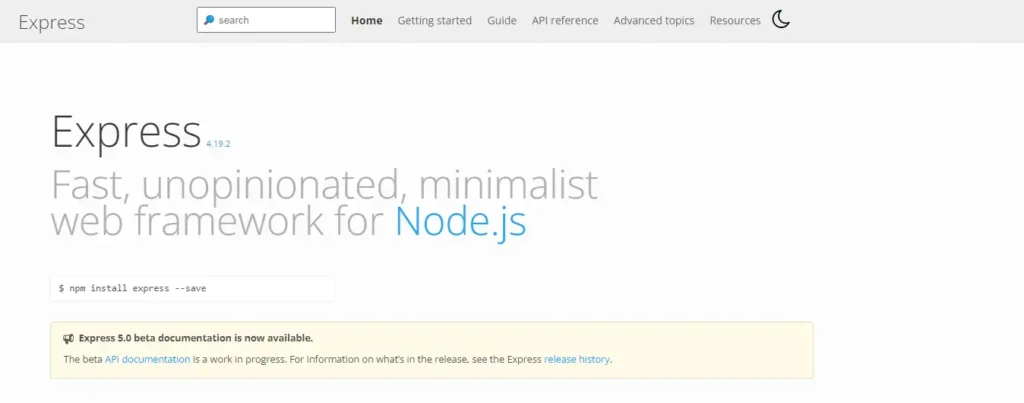
Express.js is a highly regarded framework for creating web applications. It is known for its flexibility, lightweight nature, and minimalistic approach. Despite its simplicity, Express.js offers a robust set of features that can greatly enhance the development process.
Building web applications and APIs Express.js is a popular choice for developers. Due to its ease of use and learning curve, it is also a great option for beginners. Real-time applications and microservices are especially well-suited for Express.js.
Express.js Pros
- Support many third-party plugins
- Detail documentation
- Integration with ease
- Huge community support
- High performance
- Highly extensible
Express.js Cons
- Lack of opinionated structure
- Minimalistic
- Well-suited for small to medium-sized projects
Express.js Unique Features
- Vast ecosystem of middleware libraries
- Support various HTTP methods
- Faster debugging
- Quick server-side deployment
5. Spring Boot
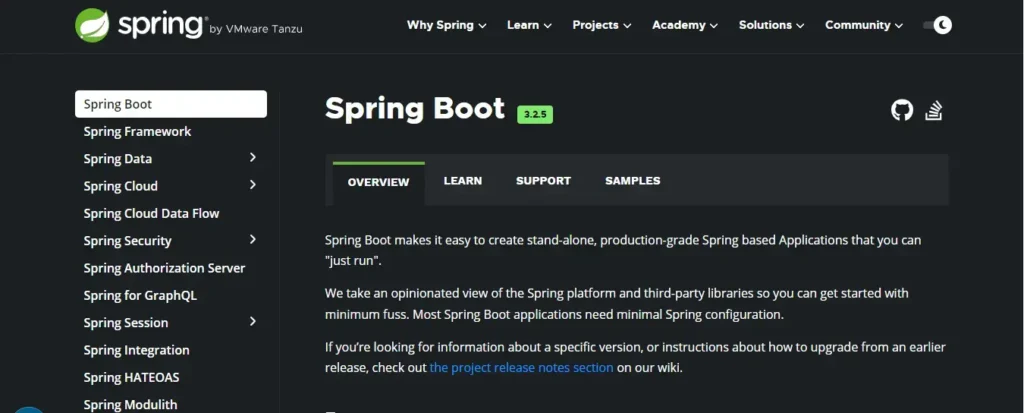
Spring Boot is one of the most used backend frameworks that is used to build production-ready, stand-alone, and web-based applications.
Furthermore, Spring Boot is particularly useful for software engineers developing web apps and microservices. It has built-in templates that allow developers to build applications quickly, reducing development time and effort.
Spring Boot Pros
- Easy development
- Less source code
- Simple setup and management
- Provide a lot of plugins
- Highly scalable
- Support for multi-threading
- Good at handling many requests
Spring Boot Cons
- Limited personalization
- Lack of control
- Not suitable for large-scale projects
Spring Boot Unique Features
- Embedded servers
- Auto-configuration
- Easy integration
- Embedded database support
6. Koa.js
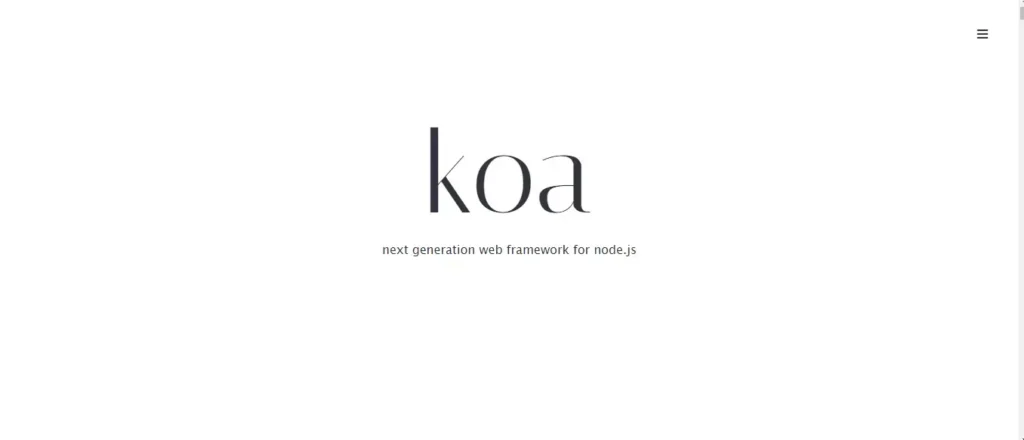
Koa.js is a flexible and minimalistic open-source backend framework that offers developers a lightweight and streamlined approach to web application development.
One of the notable advantages of Koa.js is its ability to handle multiple tasks concurrently without blocking the execution flow.
Koa.js Pros
- Flexible and scalable
- Fast application development
- Highly customizable
- Easy to learn
Koa.js Cons
- Limited built-in features
- Reduced ecosystem
- Middleware compatibility
Koa.js Unique Features
- Built-in error handling mechanism
- Context object
- Async/await support
- Better support for generators
7. Laraval
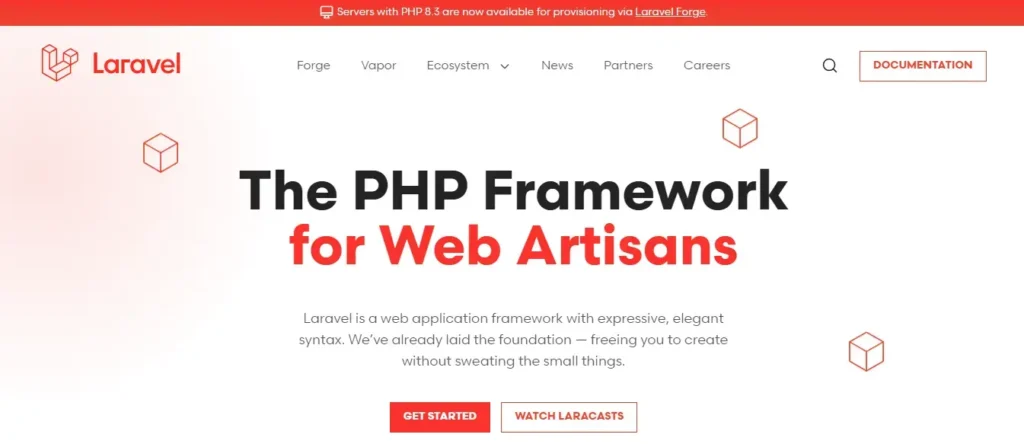
Laravel is a popular free and open-source web framework based on PHP. It is widely used for developing high-quality web applications. One of the key features of Laravel is its clean and expressive routing system, which simplifies the process of defining application routes.
Additionally, Laravel provides excellent support for testing your applications. It includes tools for writing unit tests, feature tests, and HTTP tests, making it easier to ensure the quality and stability of your codebase.
Laraval Pros
- Built-in authorization system
- Built-in libraries
- Simple coding
- Detailed-oriented documentation
Laraval Cons
- High cost
- Slower development process
- Not suitable for small datasets
Laraval Unique Features
- Simple URL routing setup
- Easy tool integration
- MVC architecture support
- Highly scalable
8. Flask
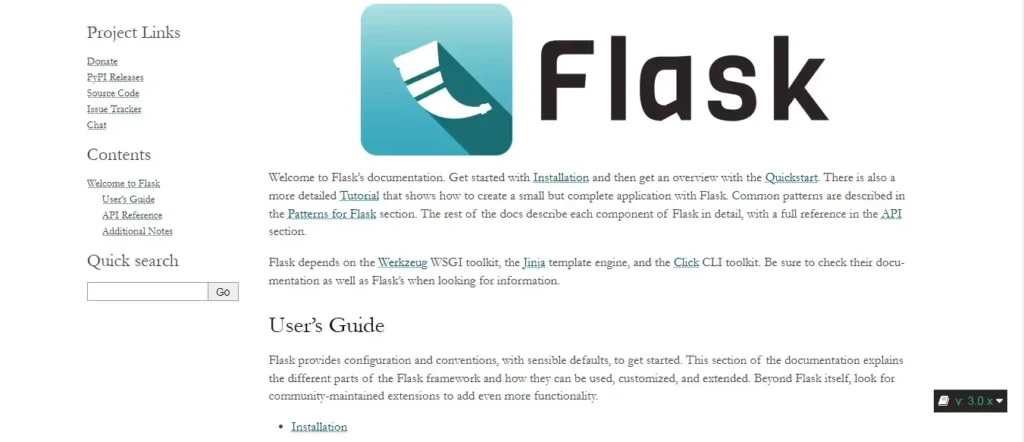
Flask is a micro web framework written in Python. Its simplicity and minimalistic design allow developers to build web applications quickly. It is an uncomplicated framework to learn and work with, suitable for beginners, and free of dependencies, making it easy to implement.
In addition, several famous companies like Pinterest and LinkedIn use Flask as their backend framework.
Flask Pros
- High flexibility
- Scalable
- Beginner-friendly
- Minimalistic design
Flask Cons
- Lack of built-in modules and libraries
- The framework is difficult and time-consuming for extensive applications
Flask Unique Features
- Integrated unit testing
- Fast debugging
- Flexible configuration
- Jinja templating
- Rapid development
9. CakePHP
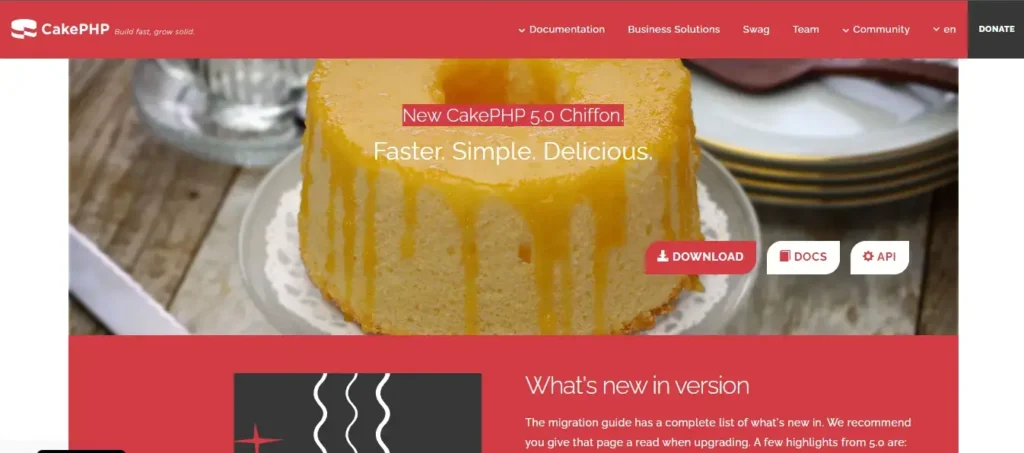
CakePHP is a widely used open-source web framework that is written in PHP and follows the Model-View-Controller (MVC) architectural pattern. It helps build scalable and reliable online applications. Like many modern frameworks, CakePHP follows the MVC architectural pattern.
It is the most secure backend framework that can offer the standard architecture to create your web application at any level if you have familiarity with the PHP backend framework.
CakePHP Pros
- No pre-configuration required
- Cost-effective
- Code reusability
CakePHP Cons
- Less modern and trendy
- Performance issues
- Migration from one version to an updated one is challenging
CakePHP Unique Features
- Built-in ORM (object-relational mapping)
- App scaffolding
- Compatible with PHP versions
10. Phoenix
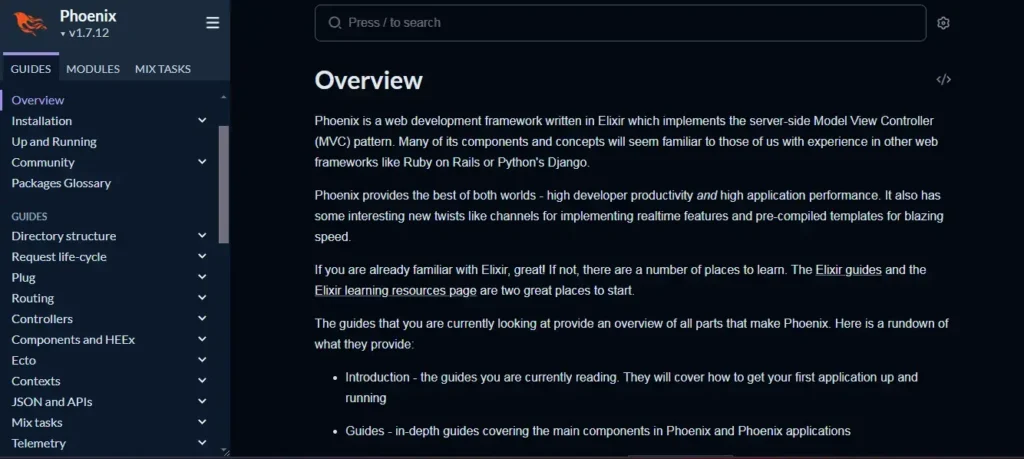
Phoenix is a web development framework written in Elixir and Erlang. This open-source framework is a highly reliable backend framework for web applications.
Moreover, this web framework is designed to streamline the process of building real-time and scalable web applications.
Phoenix Pros
- Scalability
- Provide built-in support for real-time communication
Phoenix Cons
- A small community of developers
- Language is hard to learn
- Resources are limited because of a small community
Phoenix Unique Features
- In-depth testing
- Real time elements
- Easy deployment
Why Use a Backend Framework?
Using the backend framework offers several benefits, such as:
Security
Security is the main benefit that backend frameworks provide. They give coders a lot of power over security methods so they can code them easily. Using a well-established framework, developers can build secure and reliable applications.
Scalability
Backend frameworks are flexible. They provide a structured foundation for building web applications that can easily adapt and handle increased loads as the application grows.
Integration
Backend frameworks typically come with built-in tools and libraries that simplify integrations with various components and services. By providing pre-built integrations, frameworks reduce the development effort required to connect different parts of the application.
Time-Saving
Using a backend framework can significantly save development time. These frameworks offer a set of pre-defined structures, patterns, and modules that abstract away low-level implementation details.
Developers can use these ready-to-use components to speed up the development process, rather than starting from scratch.
Streamline Development
The backend frameworks promote clean, maintainable, and error-free code. They provide a standardized architecture or design patterns that help organize and structure code effectively.
Factors to Consider When Choosing a Backend Framework
When a wide range of backend frameworks are available, it is vital to choose the one that best suits your requirements.
Below are some factors to consider when selecting a backend framework.
Ease of Use
An easy-to-use backend framework can significantly streamline the development process and reduce the learning curve for the development team. This speeds up the initial development phase, allowing developers to focus more on implementing business logic rather than dealing with low-level technical details.
Compatibility
It is another main factor to consider for selecting the backend framework. Make sure the framework can integrate seamlessly with other tools, technologies, and systems you use in your applications. Also, consider the framework support for various programming languages and platforms.
Community Support
When choosing the backend framework, it is indeed crucial to consider the level of community support available. The community surrounding a framework can significantly impact your development experience and the long-term success of your project. A strong community provides extensive documentation, tutorials, and other learning resources.
Speed and Performance
Speed and performance are crucial factors to consider when choosing a backend framework for a web application. A backend framework should be capable of efficiently handling incoming requests and processing data.
Conclusion
The backend frameworks are crucial for building scalable and feature-rich web applications. As a backend developer, the above-mentioned top ten backend frameworks can help with your project. However, choose the backend framework that best suits the requirements of your project.
At Ninjas Code, our experts have experience working with multiple frameworks to design, build, test, and deploy high-performance solutions. We can help you and make your business journey smooth with our backend development services. We have experience working with the global clients.
So, schedule a meeting with us and gain a competitive edge in the tech industry.
FAQs
- Which backend framework is most used?
Below is a list of backend frameworks that are mostly used.
- Laraval
- Django
- Spring Boot
- ASP.NET Core
- Which backend is the best?
PHP is the most famous backend that is used in web development. It has built-in modules that are used to design and create dynamic web pages and applications.
- Which framework is best for the future?
Ruby on Rails, React.js, Django, and Spring Boot are the frameworks that are best in the future.
- What are the top 5 backend development languages?
The top 5 backend development languages are:
- Java
- Javascript
- Python
- Perl
- Ruby
- How to choose a backend?
Here are some tips to help you choose the right backend.
- Define your project requirements
- Understand the backend technologies
- Know your team’s expertise
- Identify your budget
- Know the latest market trends and industry standards
- What is the easiest framework to learn?
React and Vue.js are the easiest frameworks for beginners to learn due to their flexibility, ease of use, and strong community support.
- What is the fastest frontend framework?
Vue.js is the fastest frontend framework and is known for its ease of integration.
- Which backend language is best in 2025?
Below are some backend languages that are best for 2025.
- Kotlin
- Swift
- C++
- Python
- Java







